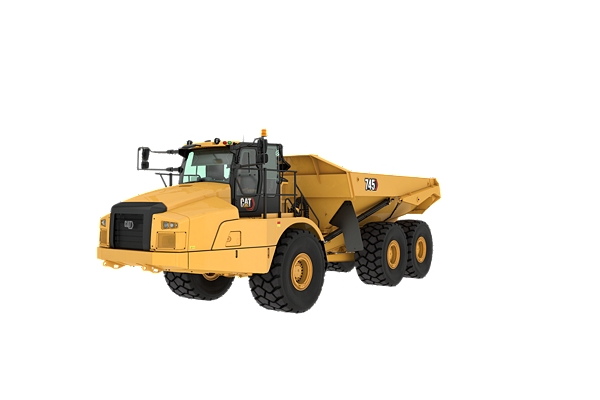Boom Lift Rental: Reach New Heights Securely
Boom Lift Rental: Reach New Heights Securely
Blog Article
Renting Out Vs. Acquiring Building Equipment: Making the Right Option for Your Project
When beginning on a construction project, one of the critical choices that predict supervisors and stakeholders deal with is whether to purchase or rent building equipment. The choice hinges on numerous variables such as expense factors to consider, task duration, tools upkeep, scalability, flexibility, and threat management.
Price Factors To Consider
When reviewing the financial element of leasing versus getting building and construction devices, the long-lasting costs and ahead of time costs must be carefully considered. Renting tools commonly needs reduced preliminary repayments compared to buying, making it an attractive alternative for short-term tasks or service providers with budget constraints. Renting removes the demand for large funding investments and decreases the financial danger connected with tools ownership, such as maintenance and devaluation expenses. Nevertheless, over time, consistently renting devices can build up higher prices than buying, particularly for prolonged tasks.
On the other hand, getting construction equipment includes higher in advance prices yet can result in long-term financial savings, specifically for long-term projects or frequent users. Inevitably, the decision in between renting and getting construction devices hinges on the job's period, regularity of use, budget plan considerations, and long-term financial objectives.
Project Period

Conversely, for long-term tasks or continuous building and construction job, purchasing tools could be the a lot more affordable choice. Acquiring tools can result in set you back savings in the future, specifically if the tools will be regularly made use of. Furthermore, possessing tools gives a feeling of control over its schedule and enables for customization to fit certain task demands.

Devices Upkeep
Given the critical function task period plays in figuring out the most affordable approach between purchasing and renting out construction tools, the emphasis currently changes towards analyzing the necessary facet of tools upkeep. Correct maintenance is critical for making sure the optimal efficiency and longevity of building tools. Renting tools typically comes with the advantage of having actually well-maintained equipment supplied by the rental company. This can alleviate the burden of upkeep tasks from the task owner or professional, conserving time and effort. On the various other hand, having equipment needs a positive approach to upkeep to stop breakdowns, guarantee security, and extend the devices's life expectancy. Normal inspections, servicing, and timely repair work are needed to keep owned equipment in top functioning problem. Element in upkeep prices when choosing in between leasing and getting, as overlooking maintenance can lead to expensive fixings, downtime, and job delays. Inevitably, a well-maintained building devices fleet, whether leased or owned, is essential for the efficient and effective completion of building tasks.
Flexibility and Scalability
In the world of construction equipment administration, the aspect of adaptability and scalability holds go significant relevance for task performance and source application. Opting to lease building devices provides a high level of versatility as it enables the quick adjustment of devices kinds and amounts based upon the progressing requirements of a project. Leasing makes it possible for professionals to access a large range of specific tools that may be required for particular tasks without the long-term dedication of ownership. This adaptability is especially useful for projects with varying needs or unpredictable durations (dozer rental).
Furthermore, scalability, another important element, is inherently connected to adaptability. Leasing building and construction equipment provides the advantage of easily scaling procedures up or down as task demands rise and fall. Specialists can promptly exchange or include tools to match the project's transforming needs without the restraints of owning possessions that might come to be underutilized or obsolete. This capability to scale resources effectively can lead to expense financial savings and enhanced job timelines, making renting a positive choice for projects calling for versatility and responsive source appropriation.
Risk Management
Reliable threat administration in building devices procedures is extremely important to guaranteeing task success and mitigating prospective financial losses. Construction tasks naturally involve different risks, such as tools break downs, crashes, and project delays, which can significantly affect the job timeline and budget plan. By meticulously thinking about the risks related to owning or leasing building devices, project managers can make informed decisions to reduce these possible dangers.
Renting construction devices can offer a level of risk mitigation by moving the responsibility of upkeep and repair services to the rental firm. This can minimize the monetary burden on the task owner in situation of unexpected tools failings (forklift rental). In addition, leasing provides the adaptability to accessibility specialized tools for details task stages, decreasing the danger of owning underutilized equipment
On the other hand, owning construction tools supplies a sense of control over its usage and upkeep. Nevertheless, this also means bearing the full duty for repair work, maintenance costs, and depreciation, raising the economic dangers connected with equipment ownership. Careful risk assessment and consideration of variables such as job period, equipment application, and maintenance needs are essential in figuring out one of the most suitable choice for efficient danger monitoring in building projects.
Verdict
To conclude, when deciding between renting out and purchasing building equipment, it is necessary to take into consideration check it out price, job period, equipment maintenance, scalability, flexibility, and risk monitoring. Each element plays a vital role in establishing one of the most appropriate choice for the task at hand. By meticulously assessing these aspects, job managers can make an enlightened decision that straightens with their budget, timeline, and total job objectives.

Report this page